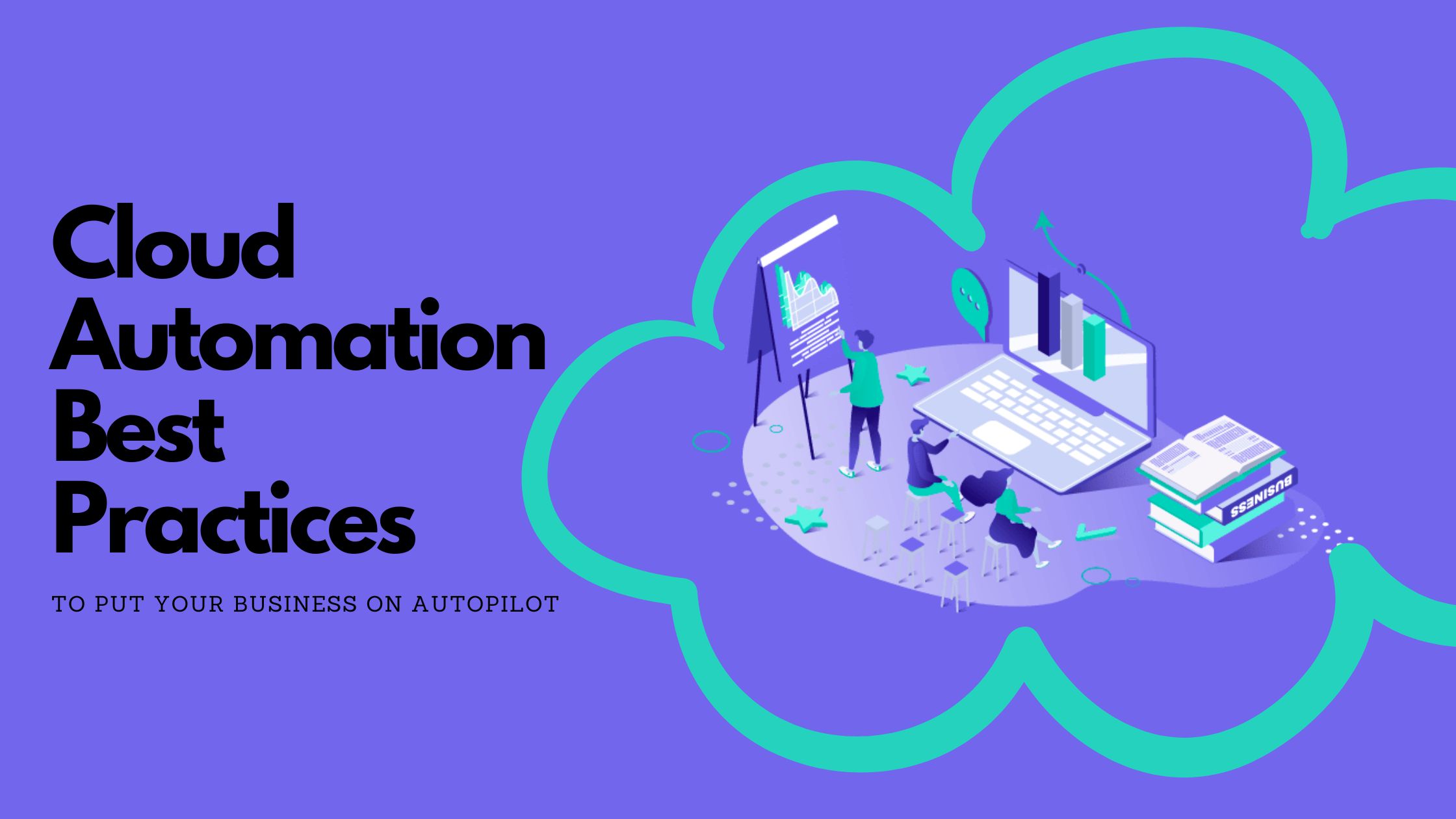Cloud Automation Best Practices to Put Your Business on Autopilot
 Harman Diaz
Harman Diaz
As more companies transition to the cloud to leverage benefits like collaboration and cost efficiencies, the cloud space becomes increasingly competitive. Automating routine operations is no longer a luxury; it's necessary for organizations aiming to enhance efficiency.
With cloud automation, businesses can streamline processes and handle increased operations effectively. However, starting the cloud automation journey demands a strategic approach to avoid common pitfalls. This article explores essential cloud automation best practices that can help organizations harness the true power of automation and drive success.
Top 8 Cloud Automation Best Practices to Follow
Here are the eight major cloud automation best practices to help organizations automate their cloud journey easily and yield maximum benefits.
Define Clear Automation Goals
Establishing your business objectives before starting your cloud automation journey is crucial for a smooth transition. Clearly define your reasons for choosing cloud automation, whether it’s to reduce deployment times, improve resource utilization, or enhance system reliability. These objectives are crucial to achieving success.
By aligning these goals with overall business outcomes, teams can create a roadmap for automation that supports the organization's vision. This alignment ensures that automation efforts lead to meaningful results and drive growth.
Start Small and Scale Gradually
After defining their automation goals, Starting with small pilot projects can help organizations test their automation strategies without overwhelming their resources. For instance, automating routine tasks like backups or monitoring can serve as a great entry point. After evaluating the pilot project’s success, organizations can scale up to more complex processes, such as CI/CD pipelines or infrastructure provisioning.
This approach allows teams to identify challenges and learn valuable lessons from smaller implementations. Once confidence is built and initial successes are achieved, organizations can gradually scale their automation efforts, expanding into more complex processes while minimizing risks.
Select the Right Tools and Technologies
Selecting the right cloud automation tools that align with your strategy is essential for successful implementation. Organizations should evaluate various solutions based on their needs, considering integration capabilities, scalability, ease of use, and vendor support. Popular tools include :
Terraform: An IaC tool that allows teams to define infrastructure as code.
Ansible: For configuration management and task automation.
AWS CloudFormation: Another IaC tool specifically for managing AWS resources.
Azure Automation: This is for streamlining resource deployment and monitoring.
Google Cloud Deployment Manager: This creates and configures cloud resources using templates.
Analyzing whether these tools match your existing system is essential to prevent complications during the rollout. Opting for the right tools and technologies improves operational productivity and facilitates automation easier. Using tools that support organizational aims will allow teams to streamline monotonous tasks and reduce mistakes while providing essential resources for critical projects to enhance productivity.
Ensure Security and Compliance
Prioritizing security and compliance is crucial in cloud automation. Organizations should adopt security best practices and monitor their cloud security posture using vulnerability scanning and threat detection tools. Role-based access Control (RBAC) can help restrict access to automation scripts and diminish the likelihood of unauthorized events, focusing on securing sensitive information.
Further, establishing a cloud governance framework with clear data protection policies ensures adherence to industry standards and regulations, such as GDPR and HIPAA. Utilizing services like AWS Security Hub or Azure Security Center provides ongoing security insights and automates compliance checks. Regular audits of automated processes maintain robust security and compliance throughout your cloud automation journey.
Continuously Monitor and Optimize
The automation journey doesn’t end after implementation. Evaluating your automation practices in an ongoing manner is necessary to make sure that automated systems function effectively. Companies shall leverage cloud monitoring tools such as Prometheus or Grafana to understand how well systems perform and identify issues.
By continuously evaluating cloud performance metrics, teams can uncover issues that hinder performance and suggest enhancements. Introducing a system of reviews and documentation can further assist in keeping track of results and identifying improvements, which boosts a commitment to ongoing development and ensures the alignment of automation with organizational aims.
Train and Upskill Teams
Investing in training and upskilling is essential for unlocking the full potential of cloud automation. Organizations should proactively implement initiatives that empower teams to understand fundamental and advanced automation concepts. By embracing online courses and workshops, teams can gain insights into new practices and technologies, enhancing the effectiveness of the organization's automation efforts.
Conclusion
As the cloud landscape continues to evolve and attract new users, cloud automation is no longer a choice but a necessity for organizations striving to enhance efficiency and maintain competitiveness. From Integrating IaC and implementing robust security measures to undertaking training and upskilling initiatives, these cloud automation best practices can help organizations improve their workflows and lower their risk exposure.
However, implementing these best practices can be daunting for organizations just starting their cloud automation journey. To effectively navigate this complexity, it's advisable to hire cloud engineers who can provide expert guidance and support throughout the process. These experts can help organizations realize the full potential of automation, positioning them for success and enabling their businesses to run on autopilot.
Subscribe to my newsletter
Read articles from Harman Diaz directly inside your inbox. Subscribe to the newsletter, and don't miss out.
Written by

Harman Diaz
Harman Diaz
I'm a seasoned technology consultant with six years of hands-on experience collaborating with major industry players. Let's explore the future of technology together!